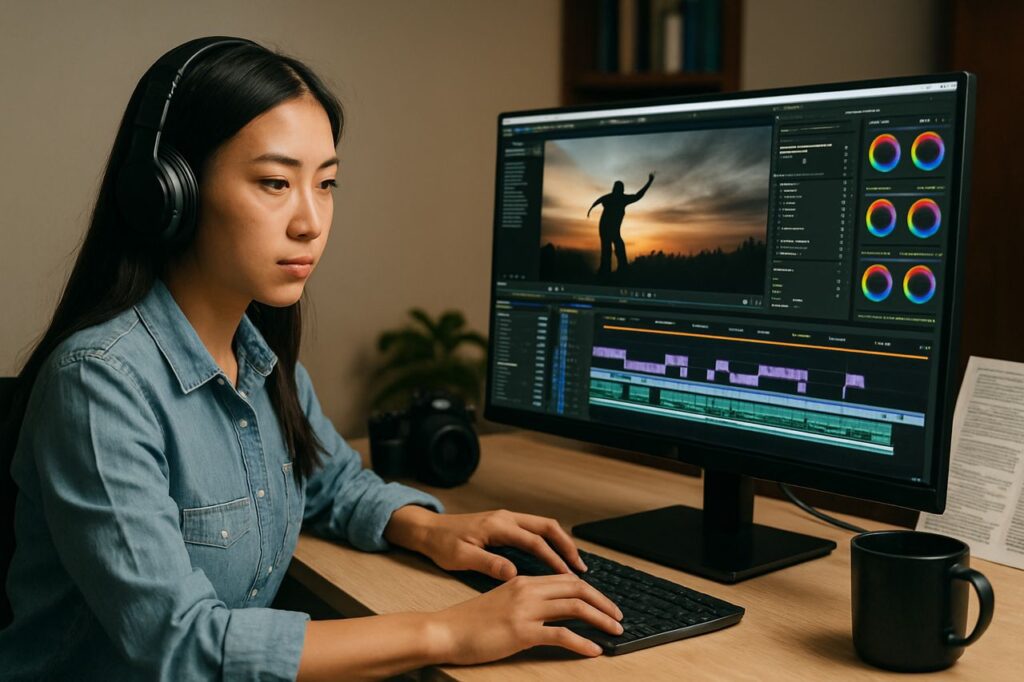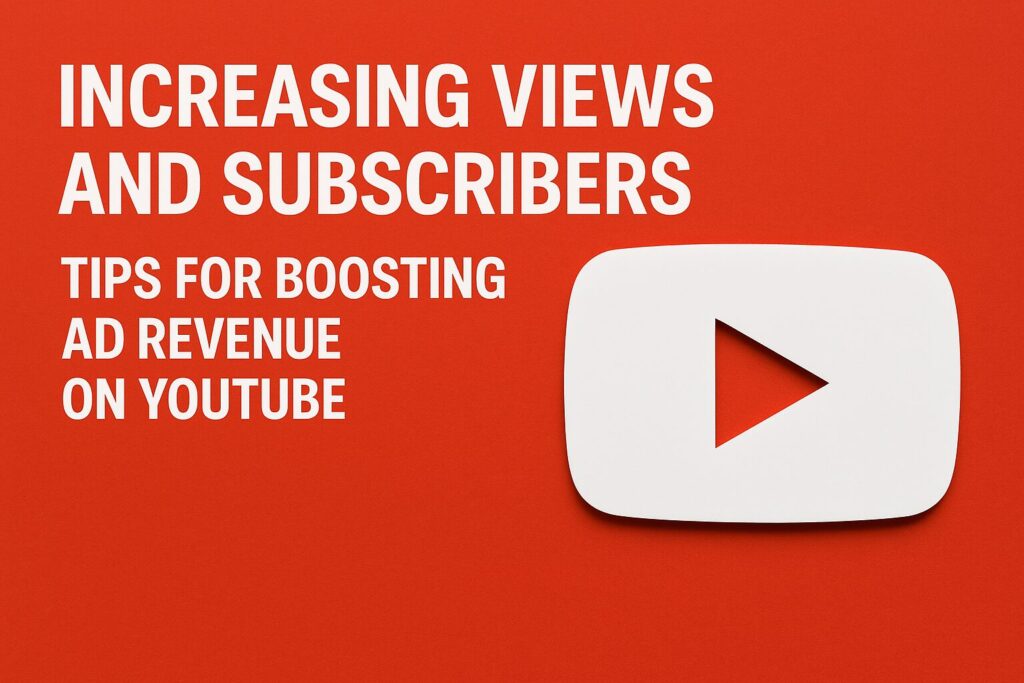The Passive Video Funnel: Multiply Your YouTube Income With Repurposed Clips
If the idea of making money on YouTube without filming yourself sounds too good to be true, relax — this isn’t one of those hypey “cash cow” fantasies. This is a real, repeatable system that creators are quietly using to pump out consistent views, affiliate clicks, and daily revenue.
It doesn’t rely on personal branding.
It doesn’t require you to be charismatic.
It doesn’t involve expensive equipment or a long learning curve.
It’s built on something much simpler:
Short, snackable videos made from repurposed content.
These clips feed into a predictable money-making system I call The Passive Video Funnel — a workflow that turns existing footage into automated income streams without requiring you to appear on camera.
Let’s break down how it works and how you can set it up from scratch.

1. Why Repurposed Clips Work So Well
People binge short videos. Attention spans are shorter, and YouTube wants to compete with TikTok and Instagram Reels — so Shorts get pushed hard.
Short clips are:
- Fast to create
- Easy to watch
- Algorithm-friendly
- Perfect for beginners
- Ideal for channels without a “face” or strong personality
More importantly:
Shorts can grow a channel from zero to monetized without ever recording a long-form video.
And once people find your Shorts, they naturally flow into your other content, your links, your affiliate offers, and anything else you decide to monetize.
That’s the whole engine behind the Passive Video Funnel.
2. What Is the Passive Video Funnel?
This funnel is a simple but powerful content system:
One long-form asset → dozens of short clips → consistent views → consistent income.
Here’s the high-level flow:
- Find long-form content (your own archive, licensed material, or generated content).
- Extract micro-moments — the parts that hook attention.
- Turn them into short vertical clips with captions, transitions, and music.
- Upload on a schedule so YouTube keeps pushing your content.
- Monetize through multiple layers, not just ad revenue.
You’re not chasing viral fame.
You’re building a repeatable content pipeline.
3. You Don’t Need to Film Anything
This is the part everyone overcomplicates. You don’t need to film yourself for one single second.
There are three legal, safe, simple sources for your clipable content:
Option A: Repurpose your own existing content
Old videos, livestreams, tutorials, interviews, screen recordings — anything you already made can become dozens of Shorts.
Option B: Use footage that’s legally licensed for reuse
This includes:
- Creative Commons content with reuse permission
- Public domain footage
- Stock footage you have rights to use
- Your own B-roll
- Purchased/licensed video packs
Option C: Use AI-generated segments
Not deepfakes, not cloned people — just clean, generic, safe visuals that support your message or niche.
You’re building a video channel, not a personal persona.
That’s why this works for introverts, retirees, side hustlers, and anyone who doesn’t want to be on camera.

4. How to Build the Passive Video Funnel (Step-by-Step)
Step 1: Pick a niche people can consume in bite-sized form
The best niches for micro-clips include:
- Motivation & mindset
- Fitness tips
- Tech how-tos
- AI tools
- Money tips
- Productivity hacks
- Storytelling
- Cooking shortcuts
- Quick tutorials
- Inspirational quotes
- Home improvement tips
- Life lessons
If people can consume it in under 60 seconds, you’re golden.
Step 2: Find high-retention moments
Look for:
- One-liners
- Surprising facts
- Contradicting statements
- Bold opinions
- Micro tutorials
- Before/after moments
Every long-form video contains dozens of these “clipable moments.”
Step 3: Turn each moment into a short vertical video
Tools make this stupid-easy:
- Clip slicers
- Auto-caption apps
- AI editors
- Drag-and-drop mobile apps
Each clip should have:
- A hook in the first 1–2 seconds
- Fast pacing
- Clean captions
- One core message
Don’t try to cram too much in — the power is in simplicity.

Step 4: Schedule everything
Recordings aren’t required. You can do all your clipping, editing, and scheduling in one day.
YouTube’s scheduler lets you line up weeks of content with zero ongoing labor.
That’s where the “passive” part kicks in.
Step 5: Add your monetization stack
This is where you quietly multiply your income.
Monetization Layer 1: YouTube Partner Program
Ads from your Shorts and long-form videos.
Monetization Layer 2: Affiliate links in your descriptions
Pick one specific Amazon-friendly product that matches your niche.
(Example: a Blue Yeti USB microphone if you’re doing productivity/audio/video niches.)
Monetization Layer 3: A simple digital download
Examples:
- Checklists
- Templates
- Mini-guides
- Notion sheets
- Cheat sheets
People love low-cost, instant digital tools.
Monetization Layer 4: Your email funnel
Capture email → deliver value → guide them to WA → recurring commissions.
Monetization Layer 5: Brand deals
Tiny channels are getting them now because short-form content performs insanely well.
5. Example Passive Video Funnel You Can Copy
Here’s one a beginner can execute:
Niche: AI productivity
Long content source: One recorded screen tutorial (or licensed content)
Clip plan:
- 15 micro tips
- 10 “did you know?” moments
- 5 tool demos
- 5 myth-busting clips
Posting schedule: 2 Shorts per day for 20 days
Monetization:
- Affiliate link to a USB microphone
- Link to your own mini-guide
- Email capture → Wealthy Affiliate funnel
- YouTube Partner Program, once eligible
This funnel builds:
- Daily views
- Daily subscribers
- Daily affiliate clicks
- Daily long-term platform trust
All without filming yourself.
6. Tools That Make This Stupid-Easy
Here’s a practical stack anyone can use:
- CapCut (free editor)
- Descript (captioning + clip slicing)
- OBS (if you want screen recordings)
- Pexels / Pixabay (legal stock footage)
- Canva (titles, overlays, templates)
Product Recommendation:
Blue Yeti USB Microphone
Great for screen-recorded or voiceover content. Legit brand, well-known, high-quality sound.
7. 30-Day Passive Video Funnel Launch Plan
Week 1 — Gather & prep
- Pick your niche
- Collect long-form content
- Identify 30–50 clip moments
Week 2 — Edit & batch
- Edit all clips
- Add captions
- Add transitions
- Export in vertical format
Week 3 — Schedule
- Upload 14–21 Shorts
- Add optimized descriptions
- Add affiliate links
- Add a simple digital download
Week 4 — Optimize
- Watch retention analytics
- Expand the clips that perform
- Start building a small email list
At the end of 30 days, you won’t just have a YouTube channel — you’ll have a system that grows on its own.

8. FAQ
Q: How often should I post?
Short answer: daily if you can, but consistency matters more than speed.
Q: Do I need a niche?
Absolutely. Random clips won’t build a loyal audience.
Q: Is this legal?
Yes — as long as you use content that you own, license, or that’s truly Creative Commons with reuse rights.
Q: Do Shorts really make money?
Yes — through ads, affiliate links, digital products, and email funnels.
Q: Do I ever need to show my face?
Never. This entire system is built for faceless creators.
YouTube Doesn’t Reward Perfection — It Rewards Output
Most beginners get stuck because they think they need a studio setup, perfect lighting, and on-camera charisma. None of that matters for this strategy.
With the Passive Video Funnel, you’re not trying to become a celebrity — you’re building a machine.
A machine that:
- Repurposes content
- Posts automatically
- Earns through multiple income streams
- Grows while you sleep
Start small. Clip what you already have. Build momentum. Layer in monetization. And let YouTube work for you instead of the other way around.

Larry Mac
Hi there, and thanks for stopping by! My name is Larry, and I’m the voice behind 6fig.com. I search the Internet to try and find money-making opportunities to share.. Thanks for stopping by. Feel free to subscribe and comment. Thank You!
You Got This, I Learned these skills and more at Wealthy Affiliate. Hey, if this 65-year-old Grandfather can make money online, you can too!


